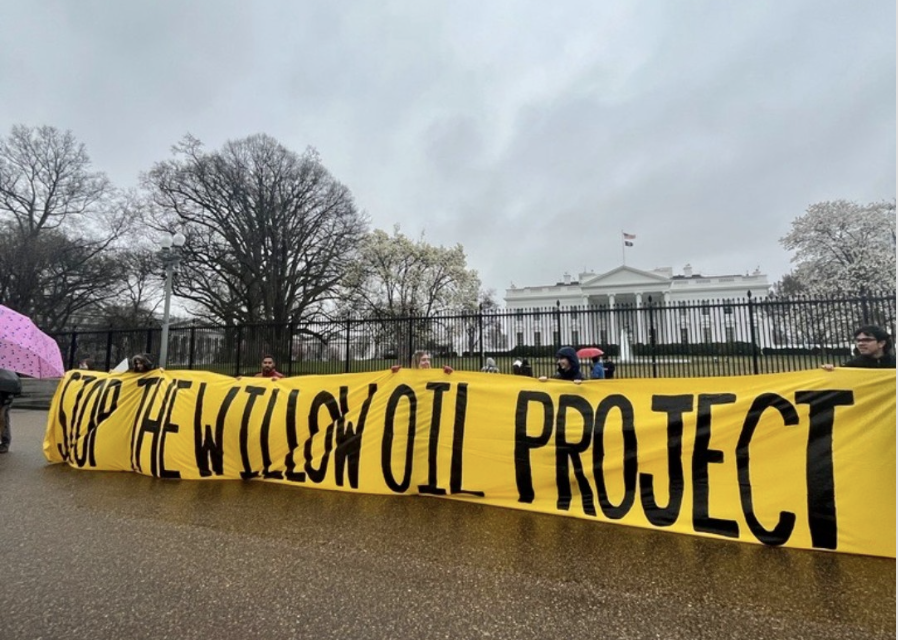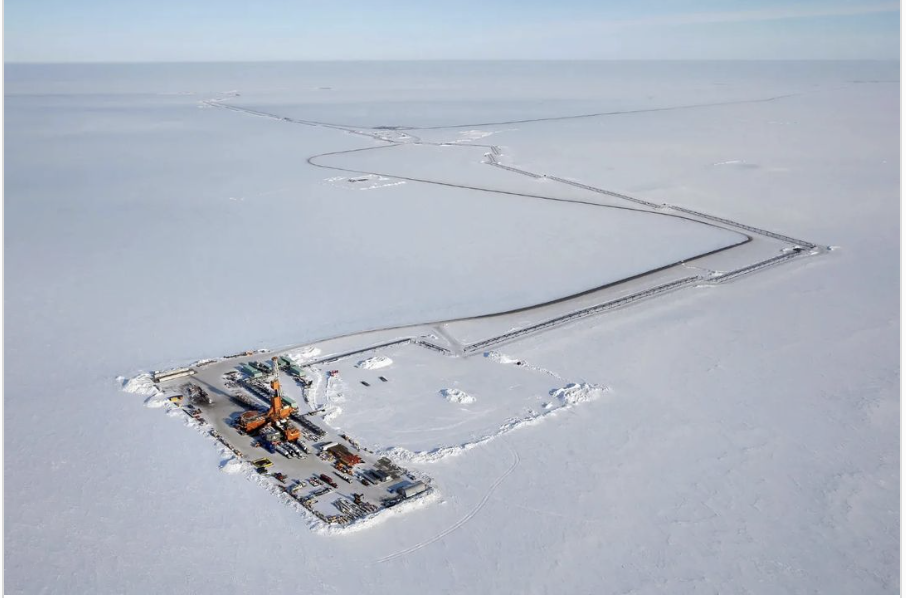Climate change and wildlife preservation will face staggering, irreversible effects from Biden’s approval of the Alaskan Willow Project.
Oil drilling needed for the Willow Project. @abdoo_696. Instagram.
The Willow Project — a multi-decade and massive oil drilling operation in northern Alaska — was approved by the Biden administration on March 13, 2023 and was met with uproar and controversy from all corners of the Internet. Indigenous and environmental activist groups immediately filed lawsuits to stop the project.
Willow is an oil reserve in Alaska that is owned by the oil company ConocoPhillips. Located in the boreal reaches of Alaska’s North Slope, the site is less than 30 miles from the Arctic Ocean. It is part of the National Petroleum Reserve-Alaska (NPR-A), a region approximately the size of the state of Indiana that forms the nation’s largest piece of public land.
This 8 billion dollar project would run for 30 years and could produce 180,000 barrels of oil per day — a significant statistic given that much of Alaska’s economic fortunes are tied to the cycles of oil.
Why has this approval been met with so much backlash on social media? Simply put, the Willow Project would go against everything climate activists are fighting for.
Protestors outside the White House fighting against the recently approved project. @wildernesssociety. Instagram.
The Willow plan involves the construction of hundreds of miles of roads and pipelines, airstrips, a gravel mine, and a new processing facility in the sensitive Arctic wetland and tundra. Beyond the direct consequences of drilling, burning the project’s oil output would add an estimated 239 million metric tons of carbon dioxide during the project’s lifetime. Going forward, Willow will create 70 million metric tons of additional CO2 emissions domestically and another 60 million tons internationally. Not to mention, the project itself will entail drilling in some of the last pristine areas of the US and will put the region’s wildlife at risk.
Now that the Biden administration has given the green light, construction will begin in earnest. Initial gravel mining and road construction work has already started, which will have a total footprint of 499 acres.
Before the project’s initial approval in mid March, many users had already posted on social media platforms such as TikTok and Instagram to spread awareness, with the hashtag #stopthewillowproject gaining popularity, amassing more than 300 million views. Even now that the project looks inevitable, influencers and creators are still posting videos, emphasizing the Willow Project’s inevitable devastating impact on Arctic wildlife. A petition on Change.org calling for an end to the project has received nearly 5 million individual signature, the number growing every day.
Construction has already begun in Alaska for oil development. @depolarexpressproject. Instagram.
TO GET INVOLVED
The fight for climate justice is not over. Sonny Ahk, an Iñuipat activist and author of the largest #StopWillow petition on Change.org, said “as we’re preparing to challenge this decision in court, it is imperative that we keep Willow as part of the national conversation.”
More and more petitions are gaining popularity online, with environmental groups making their voices heard. Campaigns such as Sierra Club, Alaska Wilderness League and Friends of the Earth are all organizations dedicated to fighting against the Willow Project.
Michelle Tian
Michelle is a senior at Boston University, majoring in journalism and minoring in philosophy. Her parents are first-generation immigrants from China, so her love for different cultures and traveling came naturally at a young age. After graduation, she hopes to continue sharing important messages through her work.













